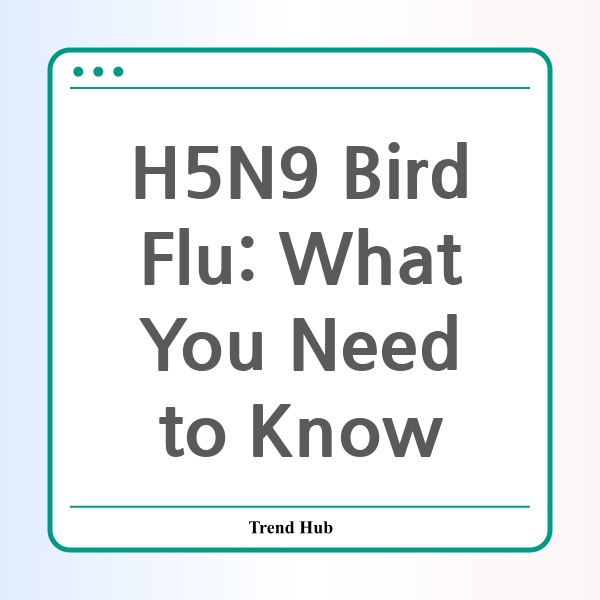* This website participates in the Amazon Affiliate Program and earns from qualifying purchases.

As alarming as it sounds, the United States has reported its first outbreak of H5N9 bird flu in poultry, raising concerns among experts and the public alike. The outbreak was confirmed on a duck farm in California’s Merced County, coinciding with the detection of the more prevalent H5N1 strain. With almost 119,000 birds having been culled due to avian influenza, it is crucial to understand what this means for public health and the poultry industry.
Bird flu, also known as highly pathogenic avian influenza (HPAI), has been wreaking havoc across the globe for several years. The emergence of the H5N9 strain marks a new chapter in this ongoing saga, as it is considered rarer than its H5N1 counterpart. Nonetheless, both strains have been responsible for significant poultry losses and have the potential to cross species barriers.
The U.S. Department of Agriculture (USDA) has indicated that this is the first confirmed case of H5N9 in poultry in the United States. The swift actions of the USDA’s Animal and Plant Health Inspection Service (APHIS), alongside state animal health officials, underscore the urgency of the situation. These agencies are conducting comprehensive epidemiological investigations and bolstering surveillance efforts to contain the outbreak.
Why does this matter? The spread of HPAI, particularly strains like H5N1 and H5N9, poses a potential risk not only to our avian friends but also to human health. The Centers for Disease Control and Prevention (CDC) is monitoring the situation closely and has stated that while the current public health risk remains low, vigilance is paramount. There are lingering questions regarding the potential for H5N9 to cause human infections, a factor that raises red flags for public health officials.
Moreover, as H5N1 continues to affect poultry stocks across the country, leading to dramatic price increases—such as the rise of egg prices from $2 to over $4 per dozen since September 2023—consumers are feeling the economic impact. The USDA has reported that over 13 million birds were affected in just the last month due to this ongoing avian flu epidemic, making it vital to stay informed.
Additionally, the situation is complicated by the transmission of HPAI to other species. It has been documented that several mammal species, including dairy cows, have contracted the virus. The possibility of infection in domestic animals, including cats, is particularly concerning. The CDC has flagged that unique mutations in cat H5N1 genomes may indicate potential adaptation for cross-species transmission, suggesting that cats could serve as mixing vessels for influenza viruses.
So, what can be done to mitigate the impact of H5N9? It's essential for farmers and poultry owners to enhance biosecurity measures on their farms, including strict protocols for monitoring and managing poultry health. Engaging in cooperative efforts with local and federal authorities can also provide valuable insights into preventative measures and outbreak responses.
In the face of these challenges, staying informed is your best defense. Regular updates from health organizations, veterinary practices, and agricultural services will be vital in understanding the evolving landscape of avian influenza and its implications for the broader community. With continuous vigilance and proactive measures, we can work towards preventing the spread of H5N9 and protecting both our poultry and public health.
* This website participates in the Amazon Affiliate Program and earns from qualifying purchases.